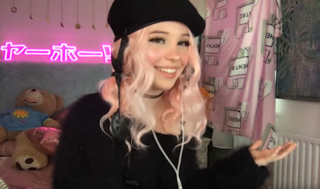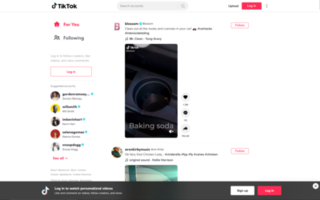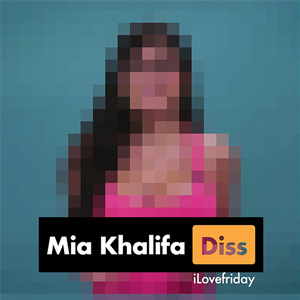Related Research Articles
Video clips refer to mostly short videos, which are usually silly jokes and funny clips, often from movies or entertainment videos such as those on YouTube. Short videos on TikTok and YouTube often influence popular culture and internet trends. Such clips are usually taken out of context and have many gags in them. Sometimes they can be used to attract the public to the user's other accounts or their long-form videos. The term is also used more loosely to mean any video program, including a full program, uploaded onto a website or other medium.

Instagram is a photo and video sharing social networking service owned by Meta Platforms. It allows users to upload media that can be edited with filters, be organized by hashtags, and be associated with a location via geographical tagging. Posts can be shared publicly or with preapproved followers. Users can browse other users' content by tags and locations, view trending content, like photos, and follow other users to add their content to a personal feed. A Meta-operated image-centric social media platform, it is available on iOS, Android, Windows 10, and the web. Users can take photos and edit them using built-in filters and other tools, then share them on other social media platforms like Facebook. It supports 32 languages including English, Spanish, French, Korean, and Japanese.

Vine was an American short-form video hosting service where users could share 6-second-long looping video clips. It was originally launched on January 24, 2013, by Vine Labs, Inc. Bought by Twitter, Inc. in 2012 before its launch, the service was shut down on January 17, 2017, and the app was discontinued a few months later.
Viral phenomena or viral sensation are objects or patterns that are able to replicate themselves or convert other objects into copies of themselves when these objects are exposed to them. Analogous to the way in which viruses propagate, the term viral pertains to a video, image, or written content spreading to numerous online users within a short time period. This concept has become a common way to describe how thoughts, information, and trends move into and through a human population.

Mary-Belle Kirschner, better known as Belle Delphine, is a South African-born British media personality, pornographic actress, model, and YouTuber. Her social media accounts feature erotic and cosplay modelling, sometimes blending the two together. Her online persona began in 2018 through her cosplay modeling on Instagram. Her posts on the platform were often influenced by popular memes and trends.

TikTok, whose mainland Chinese counterpart is Douyin, is a short-form video hosting service owned by Chinese Internet company ByteDance. It hosts user-submitted videos, which can range in duration from three seconds to 10 minutes.

The NPC, derived from non-player character, is an Internet meme that represents people who do not think for themselves or do not make their own decisions; those who lack introspection or intrapersonal communication. The meme gained further viral status on TikTok, with the surge of "NPC Streamers". In terms of politics, it's often been used by those with anti-establishment views to describe those who fail to question authority, "groupthink", or a stance that would display conformity and obedience. The NPC meme, which graphically is based on the Wojak meme, was created in July 2016 by an anonymous author and first published on the imageboard 4chan, where the idea and inspiration behind the meme were introduced.

"Mia Khalifa" (originally titled "Mia Khalifa (Diss)", also known as "Hit or Miss", and sometimes stylized as "MiA KHALiFA") is a song by American hip hop group iLoveFriday (stylized as iLOVEFRiDAY). The duo of Atlanta-based rappers Aqsa Malik (also known as Smoke Hijabi) and Xeno Carr self-released the song on February 12, 2018, which was later re-released by Records Co and Columbia Records on December 14, 2018. It was included on their second EP, Mood (2019). The song was produced by Carr. The song is a diss track targeting Mia Khalifa, a Lebanese-American Internet celebrity and former pornographic actress. The decision to write a song dissing Khalifa arose over a misunderstanding. A faked screenshot, intended as a joke, seemed to show Khalifa, who once appeared in a pornographic film wearing a hijab, criticizing Malik for smoking while wearing a hijab in a music video. iLoveFriday thought the screenshot was legitimate.

Dancing Pallbearers, also known by a variety of names, including Dancing Coffin, Coffin Dancers, Coffin Dance Meme, or simply Coffin Dance, is the informal name given to a group of pallbearers from Nana Otafrija Pallbearing and Waiting Service who are based in the coastal town of Prampram in the Greater Accra Region of southern Ghana, although they perform across the country as well as outside Ghana. The founder and leader of the group is Benjamin Aidoo. Locally, they are referred to as Dada awu.

The Backrooms are a fictional concept originating from a creepypasta posted on a 2019 4chan thread. One of the best-known examples of the Internet aesthetic of liminal spaces, which depicts usually busy locations as unnaturally empty, the Backrooms was first described as a maze of empty office rooms that can only be entered by "noclipping out of reality".
There is evidence that TikTok has down-weighted the posts of topics deemed sensitive by the Chinese government and Chinese Communist Party. Topics alleged to have been censored by the platform include the Persecution of Uyghurs in China, the 2019–2020 Hong Kong protests, the Sino-Indian border dispute, foreign political leaders, LGBTQ+ people, disabled people, and people of African descent. TikTok has also removed or omitted information from its services to comply with company policies, legal demands, and government censorship laws. TikTok's responses to claims of censorship have varied, responding that the platform was attempting to protect users from bullying, arguing that certain instances were the result of human error, and stating that such incidents were the result of algorithmic mistakes.
TikTok food trends are specific food recipes and food-related fads on the social media platform TikTok. This content amassed popularity in 2020 during the COVID-19 pandemic, as many people cooked and ate at home and more people turned to social media for entertainment. While some TikTok users share their diets and recipes, others expand their brand or image on TikTok through step-by-step videos of easy and popular recipes. Users often refer to food-related content as "FoodTok."

A devious lick was a challenge in which North American middle school and high school students posted videos of themselves stealing, vandalizing, or showing off one or more items they stole in their school, typically from a bathroom. The trend went viral on TikTok in 2021 and has resulted in the arrests of many students as well as various warnings being issued by police departments. It also allegedly spread to some schools in Latin America, England, Germany, Australia and Latvia.
YouTube Shorts is the short-form section of the American video-sharing app YouTube. Shorts focuses on vertical videos at a maximum length of 60 seconds and various features for user interaction. As of March 2024, Shorts have collectively earned over 5 trillion views since the platform was made available to the public on July 13, 2021, which include video views that pre-date the YouTube Shorts feature. Creators earn money based on the amount of views they receive, or through ad revenue. The increased popularity of YouTube Shorts has led to concerns about addiction for teenagers.
An Internet aesthetic, also simply referred to as an aesthetic or microaesthetic, is a visual art style, sometimes accompanied by a fashion style, subculture, or music genre, that usually originates from the Internet or is popularized on it. Throughout the 2010s and 2020s, online aesthetics gained increasing popularity, specifically on social media platforms such as Tumblr, Pinterest, Instagram and TikTok, and often were used by people to express their individuality and creativity. They can also be used to create a sense of community and belonging among people who share the same interests. The term aesthetic has been described as being "totally divorced from its academic origins", and is commonly used as an adjective.
TikTok Dabloons or TikTok Doubloons are a fictional currency and internet trend on TikTok which started circulating around the social platform in November 2022. The "currency" circulates around the app using photo slideshows containing a cat offering it to the user, as well as cat "merchants" selling fictional food, housing, clothing, etc., which can be bought using the currency using an "honor system" making the users track their net worth through various methods such as writing on a whiteboard, notebooks, and spreadsheets. It also has its own fictional economy which has "dabloon" counterparts of the IRS and government to control "dabloon inflation".

Skibidi Toilet is a machinima web series of YouTube videos and shorts created by Alexey Gerasimov and uploaded on his YouTube channel DaFuq!?Boom!. Produced using Source Filmmaker, the series follows a fictional war between human-headed toilets and humanoid characters with electronic devices for heads. Since the first short was posted in February 2023, Skibidi Toilet has become viral as an internet meme across various social media platforms, particularly popularized by Generation Alpha. Many commentators saw the series as Generation Alpha's first foray into internet culture.
Zepotha is a nonexistent movie created as part of a hoax by TikTok user Emily Jeffri in August 2023. A similar meme, Goncharov, had emerged on Tumblr nine months earlier, prompting comparisons between the two.
Copyright infringement and social media involves the use of social media platforms to distribute copyrighted material illegally.
The online video platform TikTok has had worldwide a social, political, and cultural impact since its global launch in September 2017. The platform has rapidly grown its userbase since its launch and surpassed 2 billion downloads in October 2020. It became the world's most popular website, ahead of Google, for the year 2021.
References
- 1 2 3 4 5 6 7 8 9 10 11 Chen, Min (February 6, 2023). "Explained: What Is Corecore, the Dada-esque 'Artistic Movement' Now Trending on TikTok?". Artnet . Retrieved April 30, 2023.
- 1 2 3 4 5 6 7 8 Rosenblatt, Kalhan (January 13, 2023). "#CoreCore videos are becoming more popular on TikTok. What exactly are they?". NBC News . Retrieved April 30, 2023.
- 1 2 3 4 5 6 7 8 Ewens, Hannah (March 30, 2023). "'Why am I crying over this?': how corecore TikTok videos caught the mood of Gen Z". The Guardian . Retrieved April 30, 2023.
- 1 2 3 4 5 6 7 8 9 Mendez II, Moises (January 20, 2023). "What to Know About Corecore, the Latest Aesthetic Taking Over TikTok". Time . Retrieved April 30, 2023.
- 1 2 3 4 5 6 7 8 9 10 11 12 Townsend, Chance (January 14, 2023). "Explaining corecore: How TikTok's newest trend may be a genuine Gen-Z art form". Mashable . Retrieved April 30, 2023.
- 1 2 Martin, Felicity (July 14, 2023). "How Aphex Twin built a cult Gen Z following". i-D . Vice Media . Retrieved November 15, 2023.
- 1 2 Cutler, Alison (February 9, 2023). "Dark TikTok trend highlights social media addiction in young people. What is Corecore?". The Miami Herald . Retrieved April 30, 2023.
- 1 2 3 4 5 6 7 Segalovich, Isabella (February 22, 2023). "TikTok's "Corecore" Is Where Men Scream Their Anguish". Hyperallergic . Retrieved April 30, 2023.
- 1 2 3 Silberling, Amanda (January 21, 2023). "TikTok's 'corecore' is the latest iteration of absurdist meme art". TechCrunch . Retrieved April 30, 2023.
- 1 2 3 4 Koh, Reena (February 17, 2023). "Meet the top 3 TikTokers at the heart of Corecore — those chaotic video compilations you've been seeing all over social media for weeks". Insider . Insider Inc. Retrieved April 30, 2023.
- 1 2 3 4 Nayyar, Rhea (January 26, 2023). "What Does TikTok's "Corecore" Have to Do With Dada?". Hyperallergic . Retrieved April 30, 2023.
- ↑ Pitcher, Laura (February 24, 2023). "Corecore is the internet screaming from inside itself". i-D . Vice Media . Retrieved May 27, 2023.
- ↑ Press-Reynolds, Kieran (November 29, 2022). "This is corecore (we're not kidding)". No Bells. Retrieved April 30, 2023.
- 1 2 Glossop, Ella (January 24, 2023). "Corecore is the Screaming-Into-Void TikTok Trend We Deserve". Vice . Retrieved April 30, 2023.
- ↑ Colquitt, Declan; Cobb, Hannah (August 28, 2023). "A Postmortem of #corecore". Flash Art . Retrieved November 15, 2023.